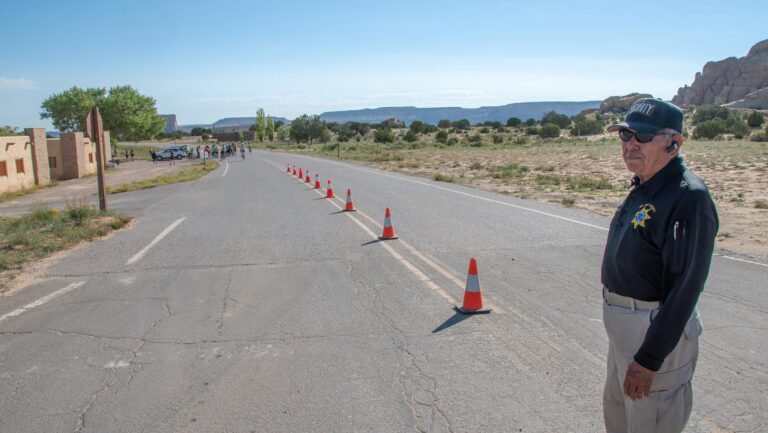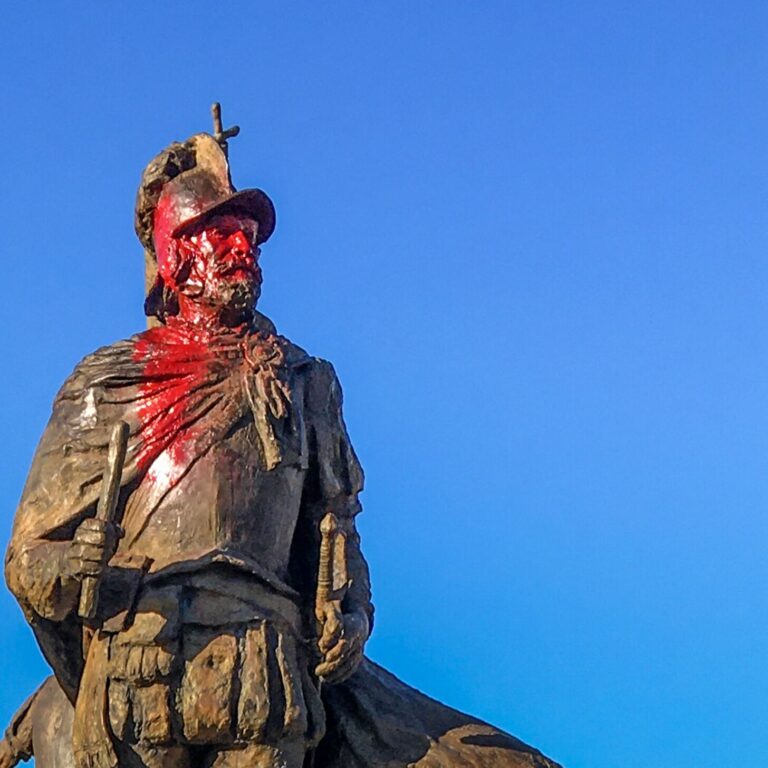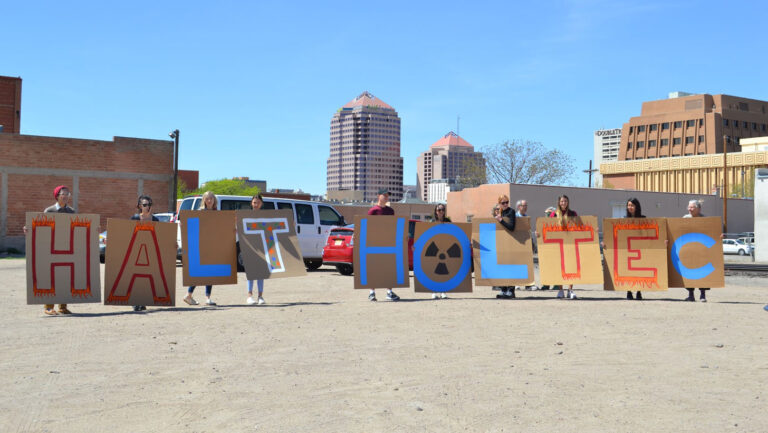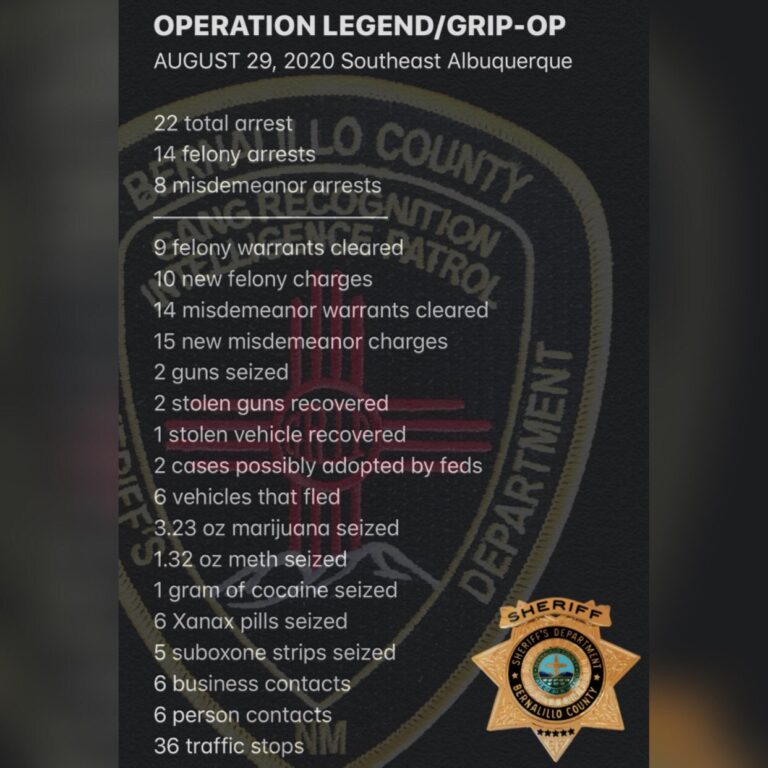Television News
Unruh-Enos sat in the Weekly Alibi conference room and began her discourse on the events leading up to the discovery of 11 human female bodies in an area of town that is still relatively remote.“I started being involved in this and doing research on it, doing a lot of work on it,” she began, “when it happened in 2009. I was working at KOAT-TV, a local television station here. I remember walking into work when they found the first set of remains and it was, like, ‘all hands on deck.’ It was a crazy time.”Unruh-Enos remembers that there were many reporters covering the discovery at that time and that three were assigned to the unfolding tale at her station, including noted local television newsman Rod Green, she said. Green retired in 2010.“That was during his last year at KOAT. It was a huge story for him to end his final year at the station. He was the real deal, an old-school journalist.” After that, another reporter began covering the story, Unruh-Enos related.“After Green, we had another reporter, she’s in Seattle now. Her name is Natalie Swaby.” Swaby did a great job, the investigative reporter continued, and several others followed after she too moved on to another market. Those included Chris Ramirez, who is now at KOB.“It really was like it was all hands on deck. Events were happening so quickly and new details were being uncovered every week. Sometimes they would find two set of remains in one week and then a week or two would go by and they wouldn’t find anything. But then they’d discover another body. And another.”Unruh-Enos further recalled that the original reporter, the journalist who reported on an unusual number of missing women in the Albuquerque area was Maggie Shepard from the now defunct Albuquerque Tribune.From the Trib
The Albuquerque Tribune was the city’s afternoon newpaper—sometimes in three editions—until 2008. Edited by Ralph Looney and later by Phill Casaus, the paper was famous for its keen investigative reporting on local issues.Among the staff, Shepard—now a PIO for the public defenders office—was known for her skills as an investigator, Unruh-Enos continued. “She was the first reporter in Albuquerque who did a story on an unusual number of women going missing. That happened in 2007. In 2008, the paper went out of business.”Further she remembers bringing up the report with the staff at the television station she worked at. “I remember going to my news director and saying this is a huge deal, this is front page news. Look at all these women who are missing. Why aren’t we doing anything about it?”She says she was surprised by the response. “She told me that if the police want to make it a big deal, they’ll let us know.” Unruh-Enos added that the police chief at that time was Ray Schultz. Schultz retired in 2013 as controversies regarding his involvement with Taser International and city police use-of-force procedures began to come to the attention of the City Council.“I made one phone call, I should have made more. But I don’t know that there was a real sense of urgency from the police department at the time of the Tribune report,” she said.“Maggie had done the story after a ride along she had with city cops. She was with a detective who showed her documents relating to 16 women who she knew were missing. The detective had been working on those cases for years,” Unruh-Enos said Shepard told her.The Case
By then, most of those women were dead. The reporter from the Tribune did not know that, the police did not know that. The women in question were all killed between 2001 and 2005, although the bodies and the makeshift graveyard where they were buried were not discovered for four more years.APD’s efforts to bring the case to a conclusion have been mixed, the investigative reporter told Weekly Alibi. “Back then there was still a sense of that because some of these women lived a high-risk lifestyle—not all of them, but some of them did—it wasn’t a priority [for the homicide department].” Now the department is looking into the case and has a task force to help move the years-old investigation along.Explaining the rationale that led to the lengthy amount of time between when the murders of such fragile, high-risk humans occurred and their subsequent discovery, Unruh-Enos said, “If they go missing, it could be for a number of reasons. They might have left town, they’re grown women. Maybe they had a drug overdose. Maybe they are incarcerated in another jurisdiction. I don’t think there was anyone taking the situation for what it really was.”The situation, it turns out, was really dire. Eleven young lives were erased by the murderer or murderers, the investigative journalist emphasized in her meeting with Weekly Alibi. And as the years pass, memories become strained and fewer and fewer resources are devoted to solving a series of tragedies that began nearly 20 years ago on the streets of Albuquerque.The Podcast
Though two “persons of interest” have been identified as possibly having been involved with the crimes, there is no definitive evidence—so far—that will help name a suspect, much less bring that person or persons to justice.That’s where Tierna Unruh-Enos’ new podcast, The Mesa, comes in.“I think those girls deserve as much as anyone else who goes missing. They deserve someone to keep looking, to search for justice for those lives lost. It’s my hope, first and foremost, that somebody out there absolutely knows something. And I think that either they’ve been too scared to come out or they thought what they knew was insignificant. There’s nothing insignificant about this case. That something, however insignificant, could be the thing that points police in the right direction.”These are the names and ages of the slain in this case: Jamie Barela, 15; Monica Candelaria, 22; Victoria Chavez, 26; Virginia Cloven, 24; Syllania Edwards, 15; Cinnamon Elks, 32; Doreen Marquez, 24; Julie Nieto, 24; Veronica Romero, 28; Evelyn Salazar, 27; and Michelle Valdez, 22.The Mesa, a podcast on Anchor.fm, examines the history of the West Mesa murders and the future of the investigation that followed those heinous crimes against women. Tune into The Mesa on Spotify or at anchor.fm/themesa.Disclosure: Tierna Unruh-Enos is the Associate Publisher at Weekly Alibi.





